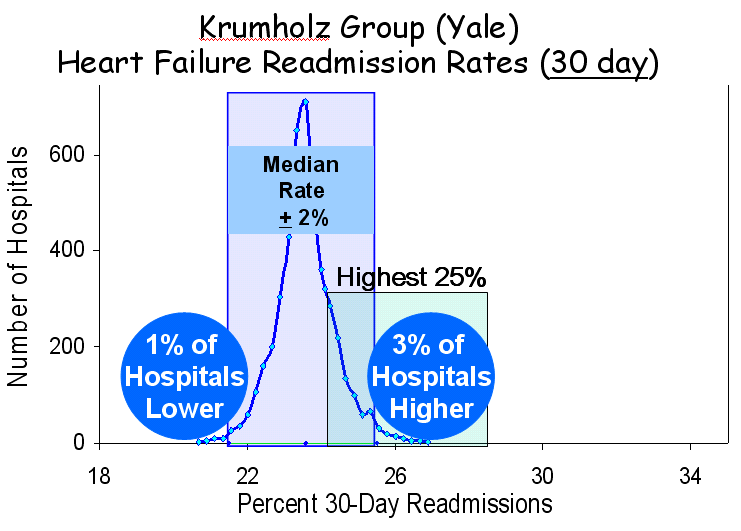Legislating to Reduce Readmissions – Bad Policy
According to MedPAC, 18% of hospitalizations among Medicare beneficiaries resulted in readmission within 30 days, accounting for $15 billion in spending. Since treatable chronic illnesses are responsible for many such hospitalizations, it is assumed that they represent failures of the health care system. MedPAC claims that 84% of readmissions are potentially preventable. However, as will become evident, most readmissions reflect differences in co-morbidities, poverty and other social determinants, all of which deserve attention, including better transition care, but few of which are under the control of hospitals. Nonetheless, health care reform assumes that regulators can accurately adjust for such risks and estimate the “excess.”
Both the House and Senate bills include reductions in payments to hospitals with “excess” readmissions. Payment would be reduced 20% for “excess” readmissions within seven days and 10% within fifteen days. Hospitals with 30-day risk-adjusted readmission rates above the 75th percentile would incur penalties of 10-20%, scaled to the time to readmission.
The legislation gives ultimate authority to the Secretary of Health to define national and hospital-specific benchmarks according to methodologies that would be determined by the Secretary and that would be free of administrative or judicial review.
So, just how many hospitals are over the threshold? The three illustrations below present the dilemma for one category of disease: congestive health failure. Each presents risk-adjusted data for more than 4,000 hospitals. MedPAC risk-adjusted using 3M’s “all patient refined diagnosis related groups” (APR-DRGs), a proprietary package that defines the severity of illness for 314 indications. CMS used their own statistical model that estimates the independent effects of age, gender, past medical history and approximately 40 comorbidities. The research group at Yale headed by Harlan Krumholz, the nation’s most prominent cardiac epidemiologist, used a hierarchical logistic regression model for patients with heart failure, drawing on age, gender, 26 comorbidity variables and 9 cardiovascular variables.

 All of the hospitals in the upper 25% as evaluated by MedPAC had readmission rates that were more than 2% above the mean, but that was true for only half of the hospitals as evaluated by CMS and for fewer than 10% of such hospitals as evaluated by the Krumholz group. Indeed, when CMS put its assessment to the statistical test, it found that, despite the wide variation depicted, only 5% of hospitals had readmission rates that were statistically “worse than the US average,” far short of the 25% that would be dunned.
All of the hospitals in the upper 25% as evaluated by MedPAC had readmission rates that were more than 2% above the mean, but that was true for only half of the hospitals as evaluated by CMS and for fewer than 10% of such hospitals as evaluated by the Krumholz group. Indeed, when CMS put its assessment to the statistical test, it found that, despite the wide variation depicted, only 5% of hospitals had readmission rates that were statistically “worse than the US average,” far short of the 25% that would be dunned.
This poor policy is a tragic manifestation of Dartmouth malarkey, which has created the false belief that reducing geographic variation could save enough to make health care reform possible – the “30% solution.” The result, instead, would be serious damage to hospitals that care for the most vulnerable patients, a large proportion of which are safety-net hospitals and academic medical centers, and that’s no way to reform health care.

I’m not an expert in health policy, but even I can see that underfunded hospitals, particularly safety-net and public hospitals whose funding will already be reduced by the various health reform bills under consideration, that cut back on their housekeeping services, are likely to have higher infection rates, and higher readmission rates, and therefore even less funding. It’s the medical equivalent of No Child Left Behind.